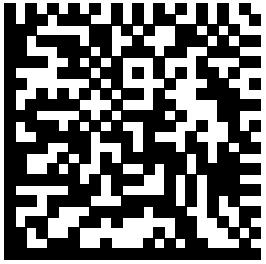tracking and tracing on:
[Wikipedia]
[Google]
[Amazon]
In the distribution and

 The international standards organization
The international standards organization
What Serialization Means for Pharma Manufacturing
accessed 30 July 2023
logistics
Logistics is the part of supply chain management that deals with the efficient forward and reverse flow of goods, services, and related information from the point of origin to the Consumption (economics), point of consumption according to the ...
of many types of products, track and trace or tracking and tracing concerns a process of determining the current and past locations (and other information) of a unique item or property. Mass serialization is the process that manufacturers go through to assign and mark each of their products with a unique identifier
A unique identifier (UID) is an identifier that is guaranteed to be unique among all identifiers used for those objects and for a specific purpose. The concept was formalized early in the development of computer science and information systems. ...
such as an Electronic Product Code
The Electronic Product Code (EPC) is designed as a universal identifier (using an idiosyncratic numerical code for each different commodity) that provides a unique identity for every physical object anywhere in the world, for all time. The EPC s ...
(EPC) for track and trace purposes. The marking or "tagging" of products is usually completed within the manufacturing process through the use of various combinations of human readable or machine readable technologies such as DataMatrix barcodes or RFID
Radio-frequency identification (RFID) uses electromagnetic fields to automatically identify and track tags attached to objects. An RFID system consists of a tiny radio transponder called a tag, a radio receiver, and a transmitter. When tri ...
.
The track and trace concept can be supported by means of reckoning and reporting of the position of vehicles and containers with the property of concern, stored, for example, in a real-time database. This approach leaves the task to compose a coherent depiction of the subsequent status reports.
Another approach is to report the arrival or departure of the object and recording the identification of the object, the location where observed, the time, and the status. This approach leaves the task to verify the reports regarding consistency and completeness. An example of this method might be the package tracking
Package tracking or package logging is the process of localizing shipping containers, mail and parcel post at different points of time during sorting, warehousing, and package delivery to verify their provenance and to predict and aid delivery ...
provided by shippers, such as the United States Postal Service
The United States Postal Service (USPS), also known as the Post Office, U.S. Mail, or simply the Postal Service, is an independent agencies of the United States government, independent agency of the executive branch of the federal governmen ...
, Deutsche Post
(, ) is a brand of the DHL Group (listed as ), used for its domestic mail services in Germany. The services offered under the brand are those of a traditional mail service, making the brand the successor of the former state-owned mail monopoly ...
, Royal Mail
Royal Mail Group Limited, trading as Royal Mail, is a British postal service and courier company. It is owned by International Distribution Services. It operates the brands Royal Mail (letters and parcels) and Parcelforce Worldwide (parcels) ...
, United Parcel Service
United Parcel Service, Inc. (UPS) is an American multinational corporation, multinational package delivery, shipping & receiving and supply chain management company founded in 1907. Originally known as the American Messenger Company specializi ...
, AirRoad, or FedEx
FedEx Corporation, originally known as Federal Express Corporation, is an American Multinational corporation, multinational Conglomerate (company), conglomerate holding company specializing in Package delivery, transportation, e-commerce, and ...
.
Technology
 The international standards organization
The international standards organization EPCglobal
The Electronic Product Code (EPC) is designed as a universal identifier (using an idiosyncratic numerical code for each different commodity) that provides a unique identity for every physical object anywhere in the world, for all time. The EPC s ...
under GS1 has ratified the EPC network standards (esp. the EPC information services EPCIS
Electronic Product Code Information Services (EPCIS) is a global GS1 Standard for creating and sharing visibility event data, both within and across enterprises, to enable users to gain a shared view of physical or digital objects within a releva ...
standard) which codify the syntax and semantics for supply chain
A supply chain is a complex logistics system that consists of facilities that convert raw materials into finished products and distribute them to end consumers or end customers, while supply chain management deals with the flow of goods in distri ...
events and the secure method for selectively sharing supply chain events with trading partners. These standards for Tracking and Tracing have been used in successful deployments in many industries and there are now a wide range of products that are certified as being compatible with these standards.
In response to a growing number of recall incidents (food, pharmaceutical, toys, etc.), a wave of software, hardware, consulting and systems vendors have emerged over the last few years to offer a range of traceability
Traceability is the capability to trace something. In some cases, it is interpreted as the ability to verify the history, location, or application of an item by means of documented recorded identification.
Other common definitions include the capa ...
solutions and tools for industry. Radio-frequency identification
Radio-frequency identification (RFID) uses electromagnetic fields to automatically Automatic identification system, identify and Tracking system, track tags attached to objects. An RFID system consists of a tiny radio transponder called a tag, ...
and barcode
A barcode or bar code is a method of representing data in a visual, Machine-readable data, machine-readable form. Initially, barcodes represented data by varying the widths, spacings and sizes of parallel lines. These barcodes, now commonly ref ...
s are two common technology methods used to deliver traceability.
RFID is synonymous with track-and-trace solutions, and has a critical role to play in supply chains. RFID is a code-carrying technology, and can be used in place of a barcode to enable non-line of sight-reading. Deployment of RFID was earlier inhibited by cost limitations but the usage is now increasing.
Barcoding is a common and cost-effective method used to implement traceability at both the item and case-level. Variable data in a barcode or a numeric or alphanumeric code format can be applied to the packaging or label. The secure data can be used as a pointer to traceability information and can also correlate with production data such as time to market and product quality.
Packaging converters have a choice of three different classes of technology to print barcodes:
* Inkjet
Inkjet printing is a type of printer (computing), computer printing that recreates a digital image by propelling droplets of ink onto paper or plastic substrates. Inkjet printers were the most commonly used type of printer in 2008, and range f ...
(dot on demand or continuous) systems are capable of printing high resolution (300 dpi or higher for dot on demand) images at press speed (up to 1000fpm). These solutions can be deployed either on-press or off-line.
* Laser
A laser is a device that emits light through a process of optical amplification based on the stimulated emission of electromagnetic radiation. The word ''laser'' originated as an acronym for light amplification by stimulated emission of radi ...
marking can be employed to ablate a coating or to cause a color change in certain materials. The advantage of laser is fine detail and high speed for character printing, and no consumables. Not all substrates accept a laser mark, and certain colors (e.g. red) are not suitable for barcode reading.
* Thermal transfer and direct thermal. For lower speed off-press applications, thermal transfer and direct thermal printers are ideal for printing variable data on labels.
Uses
Serialization facilitates supply chain agility: visibility into supply chain activities and the ability to take responsive action. Particular benefits include the ability to recognise and isolatecounterfeit
A counterfeit is a fake or unauthorized replica of a genuine product, such as money, documents, designer items, or other valuable goods. Counterfeiting generally involves creating an imitation of a genuine item that closely resembles the original ...
products and to improve the efficiency of product recall management.
Consumers can access web sites to trace the origins of their purchased products or to find the status of shipments. Consumers can type a code found on an item into a search box at the tracing website and view information. This can also be done via a smartphone
A smartphone is a mobile phone with advanced computing capabilities. It typically has a touchscreen interface, allowing users to access a wide range of applications and services, such as web browsing, email, and social media, as well as multi ...
taking a picture of a 2D barcode and thereby opening up a website that verifies the product (i.e. product authentication).
Serialization has a significant and legally endorsed safety role in the pharmaceutical
Medication (also called medicament, medicine, pharmaceutical drug, medicinal product, medicinal drug or simply drug) is a drug used to diagnose, cure, treat, or prevent disease. Drug therapy ( pharmacotherapy) is an important part of the ...
industry.Tiga HealthWhat Serialization Means for Pharma Manufacturing
accessed 30 July 2023
See also
* Drug distribution * Mobile asset management *Real-time locating system
Real-time locating systems (RTLS), also known as real-time tracking systems, are used to automatically identify and track the location of objects or people in real time, usually within a building or other contained area. Wireless RTLS tags are ...
* Tracking system
A tracking system or locating system is used for Surveillance, tracking persons or objects that do not stay in a fixed location, and supplying a time-ordered sequence of positions (track).
Applications
A myriad of tracking systems exist. ...
References
{{reflist Navigation Tracking Wireless locatingTrack and Trace
In the distribution and logistics of many types of products, track and trace or tracking and tracing concerns a process of determining the current and past locations (and other information) of a unique item or property. Mass serialization is t ...
Food safety
Drug distribution
Product recalls
Supply chain management
Automatic identification and data capture